In the competitive space we find many companies doing a non-fair use of resources. You can call that is fair competition because it’s considered legal, but the reality is that that behavior is causing dramatic consequences.
Let’s start with a basic Map
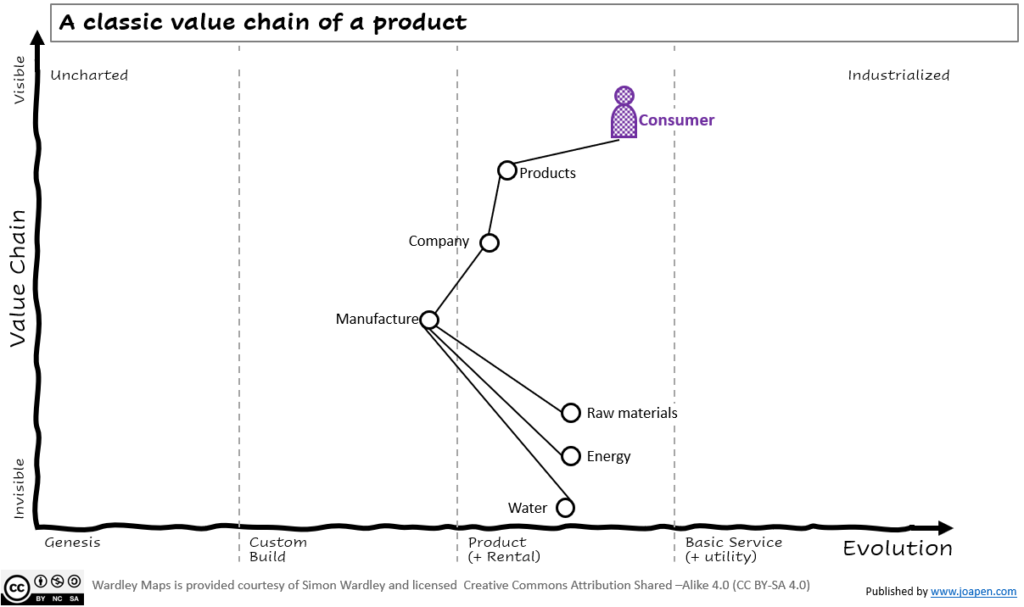
A company manufactures a product and uses raw materials, energy and water (well and many other things). The cost of the product is in the long term sent to the consumer that pays for it and the company takes some profits.
The consumer use to make decisions based on many different aspects: quality, price, service covered, branding, etc.
But, is this equation complete? The short answer is “no”.
The long answer is that the manufacturer is generating externalities that are not sum-up to the cost of the product and hence is not being directly paid by the consumer.
What are externalities?
An externality is a cost or benefit caused by a producer that is not financially incurred or received by that producer.
It can be negative (for instance: generated pollution) or positive (for instance: reduction of pollution due to a R&D discovery).
As it is not financially incurred, it is not typically represented on the value chain, by that reason I’m drawing on top of the user.
What? yes, let’s map it.
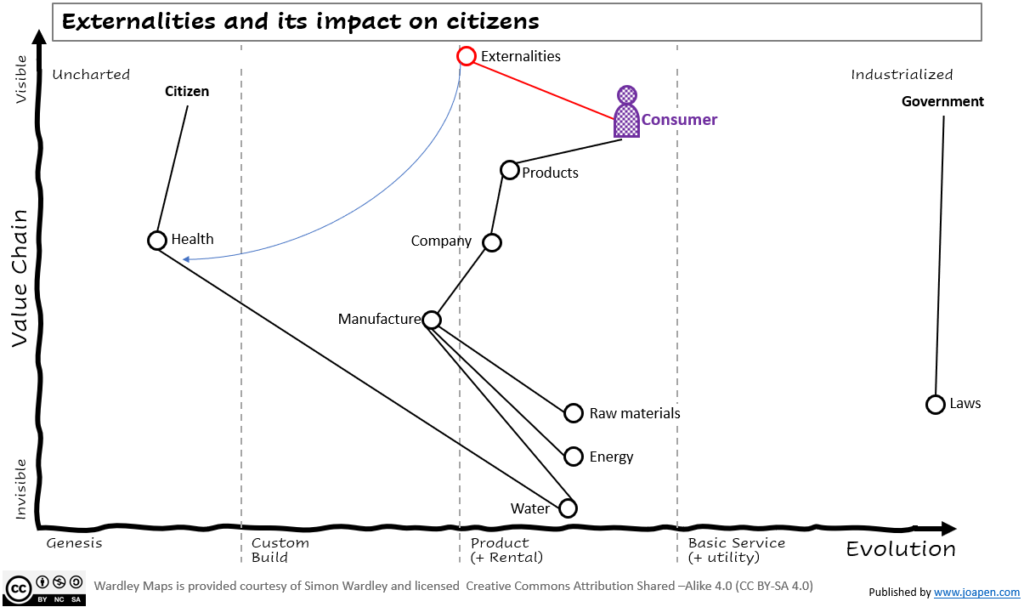
Externalities usually are things as generated pollution, abuse of human rights to build products, send waste to the sea/rivers…
The impact is directly on the citizens and there are already many local laws that try to fight against of these well known externalities.
The classic value chain is not enough, you have to add externalities if you want to have the complete equation.
So, how are typically competitors playing the game?
The classic gameplay of the majority of competitors is to reduce as much as possible the costs of the value chain below the consumer to be as much as pricing competitive as possible. When there’s not more room for cost cutting, then the use of externalities is common.
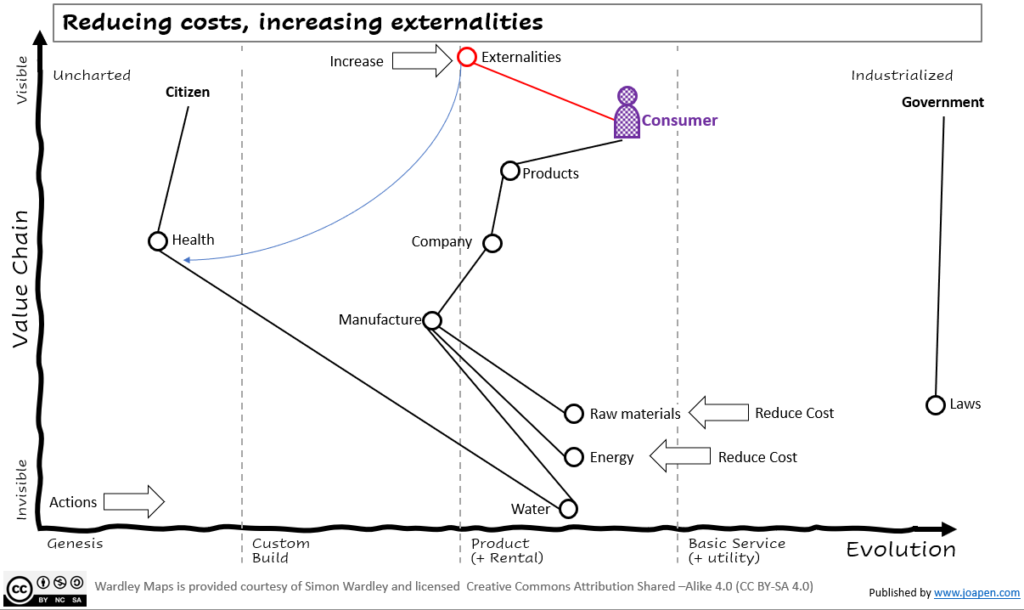
Are the consumers aware of this? yes, they are, and in many cases they do not do anything. But it is changing, the trends in certain countries about sustainability, eco-friendly products, organic food, etc. is growing.
But is this enough? to me the answer is NO.
Is there any player doing something different?
Yes, there are different players doing things in a different way. One of the well known cases is Patagonia.
Patagonia takes part of their profits and knowing they are generating a lot of externalities about the use of water, they invest part of their profits on decreasing that use of water.
This is being seen as an extraordinary gesture that is a differentiator for the consumers. It’s a different way to do things and they are being pioneers in this field.
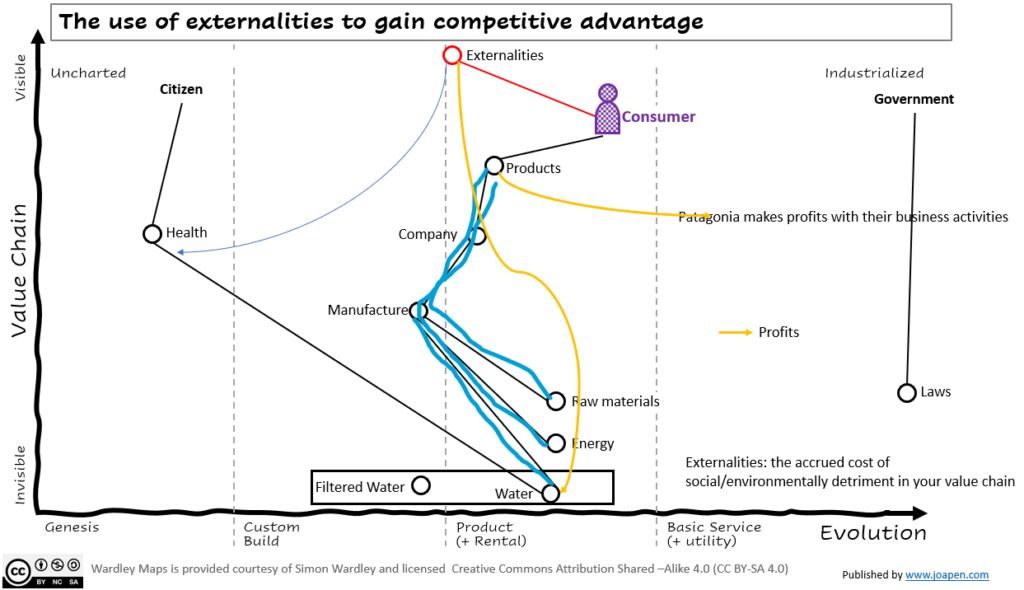
Other companies doing a lot of efforts to reduce their carbon footprint are Amazon and Microsoft. Their cloud services are high energy consumers and the investment on renewable energy is required to decrease their unit cost and they are also reducing these externalities.
In Amazon: https://sustainability.aboutamazon.com/products-services/the-cloud?energyType=true
In Microsoft: https://www.microsoft.com/en-us/corporate-responsibility/sustainability/report?ICID=SustainabilityReport22_SustWeb
I learned reading Adrian Cockcroft that the methodology used by Amazon is the same as is used by Microsoft Azure, it’s known as the Market Method.
Market method is based on the energy you pay for, rather than the energy you use. It includes the energy generated by dedicated power purchase agreements, and renewable energy credits bought on the open market.
Google use the Location Method, which doesn’t include the energy from their power purchases, and reports more carbon emissions than the Market Method. Ideally everyone would share both.
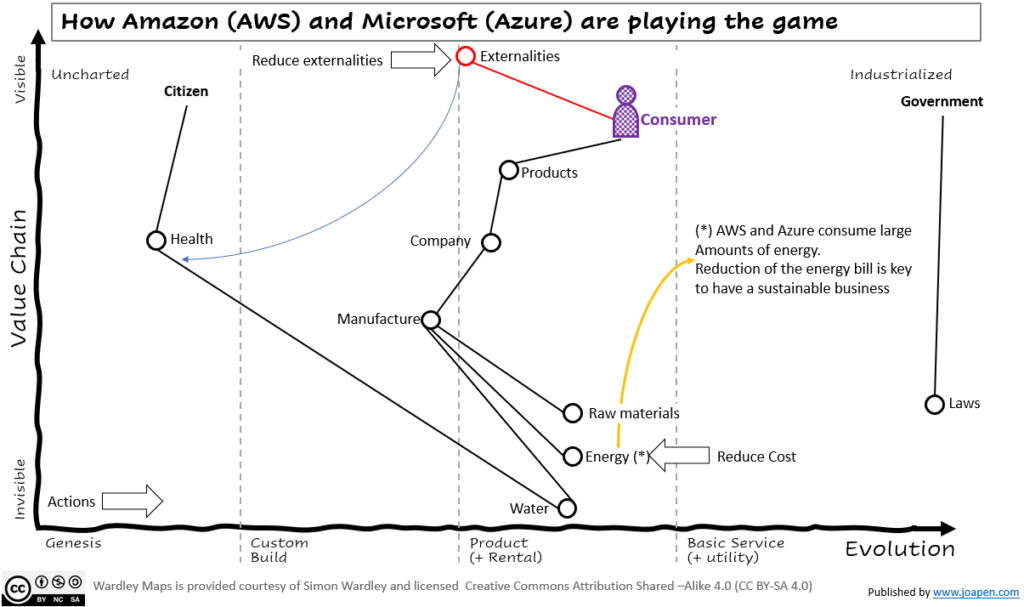
Unfortunately this is not enough
Global companies uses third world countries to exploit their resources and generate externalities to stay competitive. Retail companies, oil companies, chemical companies, are all playing the same classic game. They all benefit of lack of strong global coordination to stop the generation of externalities.
Takeaways
Sustainability is key topic since decades. It has been ignored by majority of consumers and business for decades too. This situation is becoming unsustainable and all actions taken are not enough.
In business and is important to visualize correctly where the impact goes. The use of the 3 spaces available in Wardley Mapping facilitates the communications of the value chain and the impact on the different areas of life.
